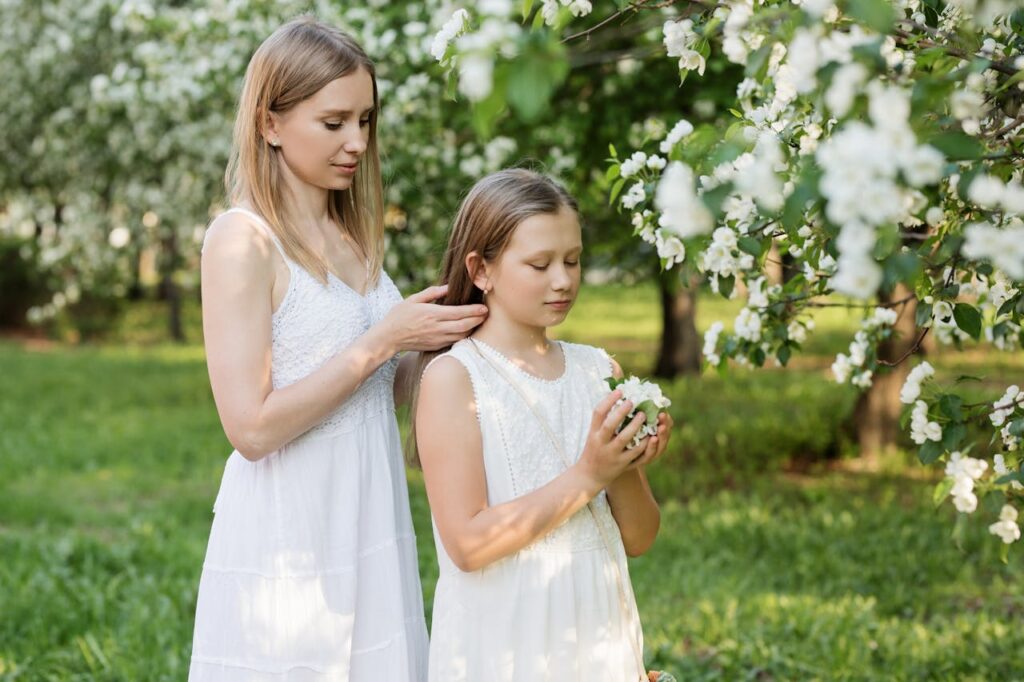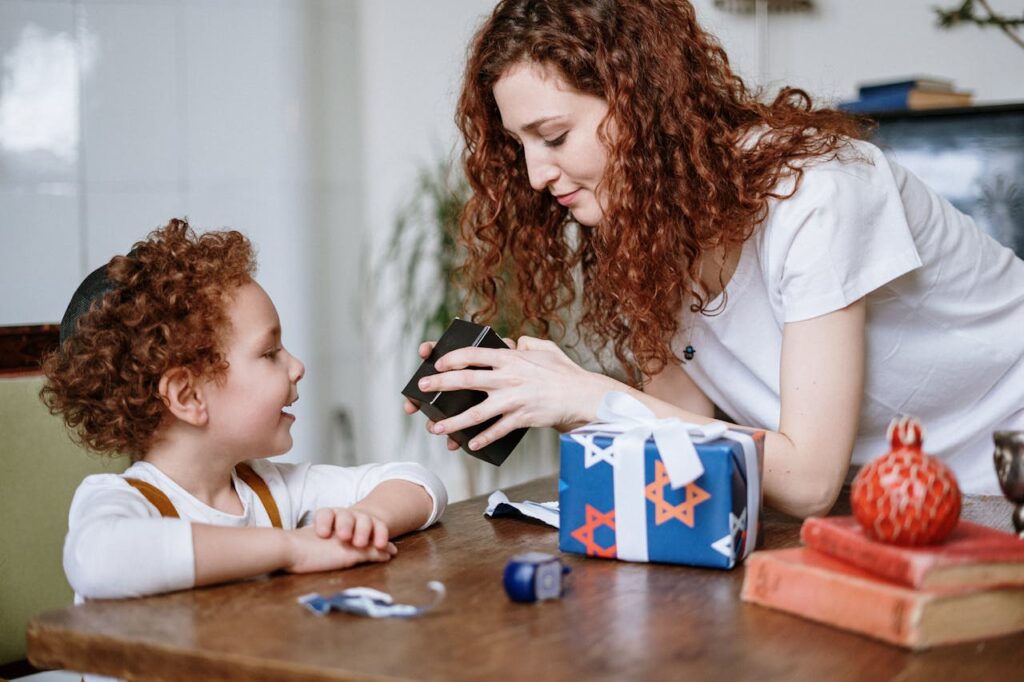Do you want to build the best relationship possible with your child? Then you need to understand the concept of the five love languages and how they can help build a deep emotional connection between you and your child. A strong bond with your child will make him/her more responsive to your discipline and lessons.

The concept of love languages applies to all relationships. It is most widely known in romantic relationships, but as you will see it has its place within a parent-child relationship. The concept of the five love languages was introduced by Dr. Gary Chapman in his book The Five Love Languages: How to Express Heartfelt Commitment to Your Mate in 1992. He later followed up with The Five Love Languages of Children in 1997 as a useful tool to help parents understand and connect with their children.
What is a Love Language?
A love language can be defined as a verbal or non-verbal means to express love to another person.
Love is a powerful force that can greatly impact a child’s mental health and development. Parents and family members need to show children love and physical affection, which has an impact on their well-being. There are many ways in which parents can show love to their children. These expressions can be grouped into 5 general categories known as the five love languages.
Knowing that you love your little one and being sincere with them is not enough. It is necessary to communicate your feelings towards them in the way in which they will best receive it. Understand that if you have more than one child, that which makes one feel loved doesn’t necessarily make the other feel loved. So take the time to understand how to fill each child’s emotional tank. The consequences of not satisfying those emotional needs now may manifest in undesirable behaviors in the short term, when they get to teenage years and adulthood, they will look for love in the wrong places.
When we speak to our child’s primary love language it satisfies their emotional needs filling them up with love and affection. This in turn makes them feel loved and understood increasing the likelihood of them being receptive to our discipline and training.
What are the 5 love languages?
Words of Affirmation
Words of affirmation are a powerful way to show love and appreciation to your child. Children whose primary love language is words of affirmation thrive on compliments, encouraging words, and written expressions of love. Special focus should be placed on the tone of voice, and overall mood when communicating with your little one.
With a child whose primary love language is words of affirmation, avoid cutting words, shouting, and constant praise.
Death and life are in the power of the tongue: and they that love it shall eat the fruit thereof. – Proverbs 18:21
Quality Time
Quality time is expressed by giving focused undivided attention. Your little one craves your attention and meaningful interactions with you. So you should be fully present in mind and body with no distractions to fill their emotional love tank. Give lots of eye contact, engage in play time, and do chores with them at their request. By spending quality time with your child, you can show them love, build trust, and create lasting memories together.
When a child’s primary love language is spending quality time, avoid isolating them as a form of punishment.
Acts of Service
Acts of service involve doing thoughtful and helpful things for your child. Children who value acts of service as their primary love language love when you offer gestures of kindness and support. As we know parenthood is a service-based job. On a daily we serve our children through the necessary and mundane chores. Zoning in on this love language involves being sensitive to special requests and understanding that they may be able to accomplish the task themselves but they need you to grant them their wishes to fill their love tank. By performing acts of service for your child, you can demonstrate your love, and meet their needs.
When a child’s main love language is acts of service, avoid granting every request they make.
Receiving Gifts
Who doesn’t like to receive gifts? Not anyone that I know. The act of receiving gifts is a wonderful way for children to feel loved by their loved ones. It is important to note that when the most important love language for a child is the act of receiving gifts, the value of the gift does not matter as much as the thoughtfulness of the gift itself. There is a difference between giving a toy to a child who constantly begs and throws tantrums for toys and those who appreciate the gift no matter how simple or small.
Avoid over-gifting to children who value receiving gifts.
Physical Touch
Physical touch is a powerful love language that communicates love deeply through mere physical affection. Physical touch can include hugs, kisses, gentle touches, hi-five, and pats on the back that convey warmth and closeness.
Avoid spanking in children who place significant value on physical touch.
How to express love through a child’s love language?
Words of Affirmation
Praise their efforts and achievements no matter how big or small. Try to catch them doing something right and affirm them.
“Wow, I see that picked up all your toys off the ground making your room nice and clean.”
Tell your child how much you love them and how special they are to you. Get down to their eye level and speak to them using affectionate and endearing words.
“I love you so much”
Leave little love notes for your child in their lunch box expressing your love and appreciation for them. This will surely put a smile on their face at school.
Speak highly of them in front of others. Try talking to the stuffed toys in the presence of your child praising him/her.
“Mr. Bunny, Ariah did a great job cleaning her shoes today.”
Compliment them on their physical traits to build their self-confidence.
“Your muscles are looking so big.” “Your dark brown skin is so beautiful it is glowing like the sun.”
Call them whenever you are away to let them know you are thinking of them.

Quality Time
Plan fun activities your children would like such as playing games, taking a walk, baking cookies, or watching a movie. Focus on creating positive experiences and building a strong connection with your child.
Take the time to sit down and have meaningful conversations. Listen attentively and engage in open and honest communication. Show genuine interest in their thoughts, feelings, and experiences. During these moments you should be fully present and attentive setting aside distractions.
Set a schedule or make it a tradition that you and your child can look forward to a weekly family movie night, a monthly outing, or a special meal on a holiday.
Capture these moments through photos, videos, or journal entries to reflect upon in the future.
Not all moments can be scheduled, so anticipate your child’s desire for quality time and engage in a conversation or play with them before you make dinner, or go to work.
Maximize quality time by doing chores. Do the laundry, wash dishes, or take out the trash together.
Reading is a great way to have one-on-one time with your little one and connect.

Acts of Service
Offer to help your child with chores and tasks around the house, such as cleaning their room, doing their laundry, or preparing their favorite meal. Show that you are willing to lend a hand and support them in their daily responsibilities.
Be there for your child when they need guidance with homework, a project, or a personal challenge.
Help them fix a broken toy.
Even when in a rush help them do the tasks that will get you through the door.
Help them by demonstrating how to serve a community by getting involved with community or church projects. Teach them how to serve others first.

Receiving Gifts
Choose gifts that reflect their likes. For example, if a child loves dinosaurs, a parent can surprise them with a new dinosaur toy or book about dinosaurs.
Celebrate their accomplishments with a special gift. Whether it’s a good report card, a successful sports game, or a performance, a small gift can convey encouragement.
Birthdays, holidays, and other special occasions are opportunities for parents to show love to their children by giving meaningful gifts.
Keep a small collection of inexpensive gifts stashed away whenever there is a need or desire to gift.
Give personalized gifts so they know it was bought or made with them in mind.
Pack a gift in the lunch box that they take to school. It will be a wonderful surprise for them.

Physical Touch
Giving hugs and kisses can convey comfort, reassurance, and affection, making children feel loved and secure.
Cuddling with children can create a sense of closeness and intimacy. Cuddling can be done while reading a bedtime story, watching a movie together, or snuggling on the couch.
Parents can show love to their children through small, affectionate gestures such as holding hands, patting their back, giving a hi-five, or ruffling their hair.
Offer your child a massage, and the opportunity to sit on your lap while on the couch.

How to discover your child’s primary love language?
Speak all love languages to children especially those younger than 5. If your child is younger than 5 years of age, you may not be able to decipher the child’s main love language. So speak to all of them.
It is important to teach and love children in all love languages. It is necessary for the child’s personal growth that parents heavily shower the child’s main love language but also sprinkle the other four with attention so that they are nurtured to create a well-rounded emotionally healthy adult.
Parents typically project their love languages on their children. The children in return do not feel the expression of love because it may not be how they would like to receive love. This shows the importance of discovering your child’s love language.
To get an idea of your child’s primary love language you need to observe these things.
1. How do they express their love to you?
2. How do they express love to others?
3. What do they request the most from you?
4. What do they frequently complain about?
5. Give them options on what they would want from you and let them choose. “Do you want us to go watch a movie together? Or, would you rather I buy a dump truck for you?”
Frequently asked questions:
1. Is there a love language for kids?
The 5 love languages are universal across all age groups. They are the same for children as well as adults, but they may manifest in different ways.
2. How do I speak my child’s love language?
To speak your child’s love language is to first know their love language. To find out what is your child’s love language you can try one of these Love language tests. https://5lovelanguages.com/quizzes/love-language
Conclusion
In conclusion, parents can show love to their children through the five love languages. Each child has a primary love language, but it is important to speak to all the love languages to help your children feel valued, secure, and connected.


